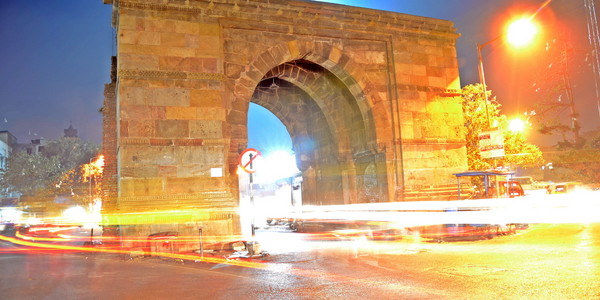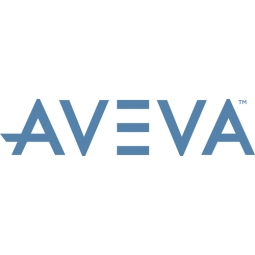
Technology Category
- Analytics & Modeling - Real Time Analytics
Applicable Industries
- Cement
- Cities & Municipalities
Applicable Functions
- Quality Assurance
Use Cases
- Inventory Management
- Smart City Operations
Services
- Testing & Certification
The Customer
Nava Raipur
About The Customer
The customer in this case is the city of Nava Raipur, the new capital of Chhattisgarh state in India. The city was being built from scratch, with the goal of becoming a world-class greenfield smart city. The city planners aimed to create a city that was not only environmentally sustainable but also highly livable, with efficient and effective civic amenities and planning systems. The city was designed to meet the needs of its citizens and businesses, with a focus on safety, efficiency, and sustainability. The success of the project has led to Nava Raipur being seen as a model for future urban development in India.
The Challenge
The challenge was to construct a world-class greenfield smart city in Nava Raipur, the new capital of Chhattisgarh state in India. The goal was to create an environmentally sustainable city that would meet the needs of its citizens and businesses through optimized solutions. The city was to be designed with high livability in mind, focusing on operational efficiency in civic amenities and planning systems. The city planners aimed to enhance the quality of life of its residents through safe, efficient, and sustainable civic amenities and planning systems. The challenge was not just to build a city, but to build a smart city that would serve as a model for future urban development in India.
The Solution
The solution was to develop an infrastructure and operations plan that would underpin optimized city management. This involved the use of smart technologies to manage critical infrastructure systems across the city in real time. The plan included better management of supply and demand for crucial civic services including water, street-lighting, electrical and sewerage services. The use of real-time insight and management systems allowed for efficient and sustainable use of resources, contributing to the city's goal of being environmentally sustainable. The success of the project led to Nava Raipur being designated a lighthouse for the Indian Government’s National Smart Cities Mission, serving as a model for other cities in the country.
Operational Impact
Quantitative Benefit

Case Study missing?
Start adding your own!
Register with your work email and create a new case study profile for your business.
Related Case Studies.

Case Study
Turning A Stadium Into A Smart Building
Honeywell created what it called the “intelligent system” for the National Stadium in Beijing, China, turning the venue for the opening and closing events at the 2008 Summer Olympics into a “smart building.” Designed by highly controversial artist Ai Weiwei, the “Bird’s Nest” remains one of the most impressive feats of stadium architecture in the world. The 250,000 square meter structure housed more than 100,000 athletes and spectators at a time. To accommodate such capacity, China turned to Honeywell’s EBI Integrated Building Management System to create an integrated “intelligent system” for improved building security, safety and energy efficiency.

Case Study
System 800xA at Indian Cement Plants
Chettinad Cement recognized that further efficiencies could be achieved in its cement manufacturing process. It looked to investing in comprehensive operational and control technologies to manage and derive productivity and energy efficiency gains from the assets on Line 2, their second plant in India.
.png)
Case Study
Smart Street Light Network (Copenhagen)
Key stakeholders are taking a comprehensive approach to rethinking smart city innovation. City leaders have collaborated through partnerships involving government, research institutions and solution providers. The Copenhagen Solutions Lab is one of the leading organizations at the forefront of this movement. By bringing together manufacturers with municipal buyers, the Copenhagen Solutions Lab has catalyzed the development and deployment of next-generation smart city innovations. Copenhagen is leveraging this unique approach to accelerate the implementation of smart city solutions. One of the primary focus areas is LED street lighting.

Case Study
Buoy Status Monitoring with LoRa
The Netherlands are well-known for their inland waterways, canals, sluices and of course port activities. The Dutch Ministry of Infrastructure indicates that there are thousands of buoys and fixed items in and near water environments that would profit from IoT monitoring. One of the problems with buoys for example, is that they get hit by ships and the anchor cable breaks. Without connectivity, it takes quite some time to find out that something has happened with that buoy. Not to mention the costs of renting a boat to go to the buoy to fix it. Another important issue, is that there is no real-time monitoring of the buoys at this moment. Only by physically visiting the object on the water, one gains insight in its status.

Case Study
Barcelona Case Study
Barcelona’s heavy traffic and its associated high levels of pollution were the primary factors that motivated some companies and universities to work on strategies for improving traffic in the city centre. Bitcarrier is one of the technologies involved in the In4Mo Project, whose main objective is to develop the applications that form the core of smart mobility, one of the fundamental pillars of the smart city concept.








